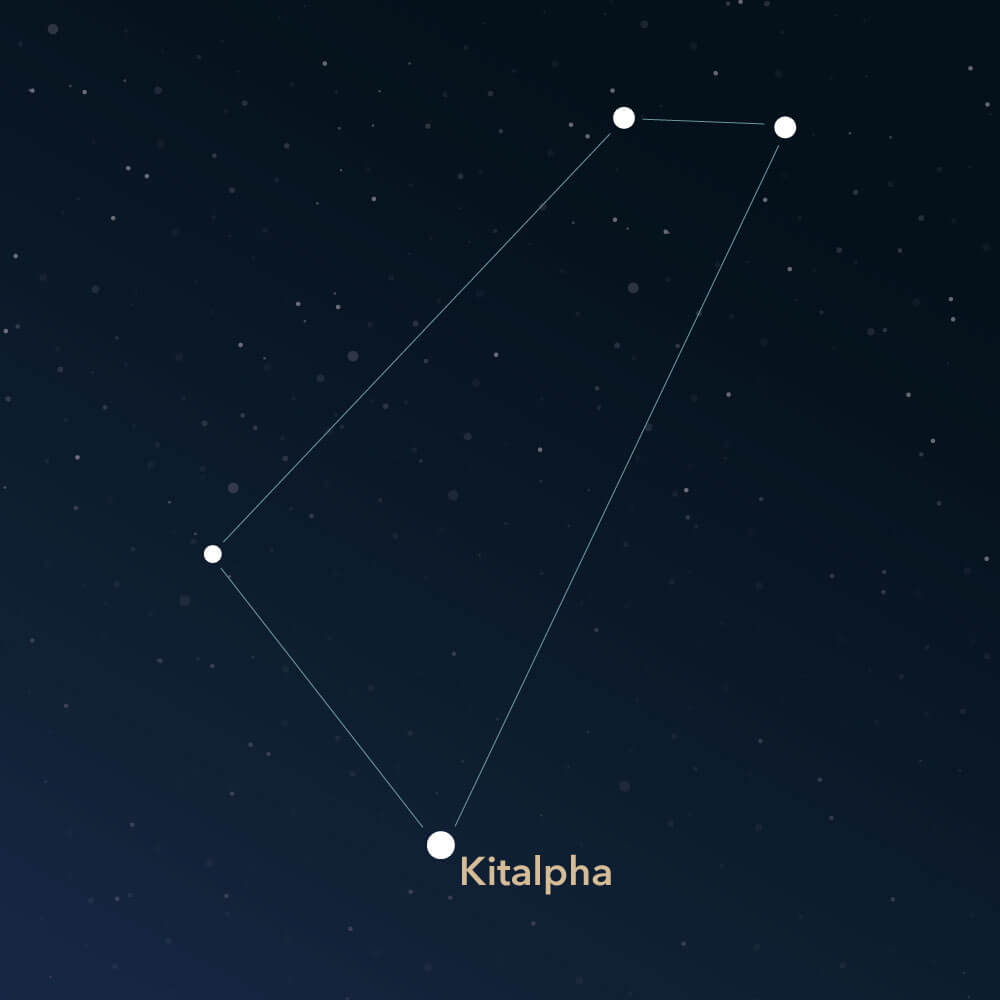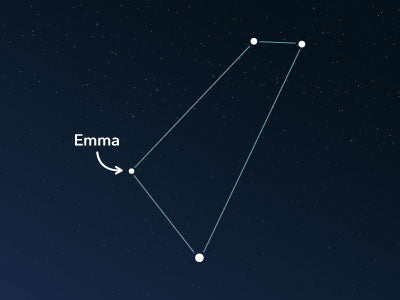The constellation Equuleus
Characteristics
- Other names / Symbolism
- Pony, Little Horse
- Hemisphere
- Northern hemisphere
- Visibility
- September - November
- Area
- 72 deg²
- Brightest star
- Kitalpha (HIP number 104987)
- Specialties
- Galaxies

The Equuleus, Latin for little horse or foal, is one of the 48 ancient constellations described by the Greco-Roman astronomer Claudius Ptolemy. However, back then, it was often referred to as the "horse's head." Only the Arabic astronomers called it "the first horse" because it rises in the sky before the constellation Pegasus, a winged horse, appears.
Hemisphere, visibility, and area
The constellation of Equuleus is located in the northern sky near the equator. Due to its location, it is visible from almost all inhabited regions of the earth. It can be seen from all places in the northern hemisphere, and in the south, it is visible up to the 77th parallel. It is only not visible in Antarctica.
The best months to observe the constellation in the night sky are from September to November.
With its almost 72 square degrees, the constellation is one of the smallest in the night sky. It is the second-smallest constellation, with only the Crux being smaller.
There are different visualizations of the Equuleus. In many depictions, four stars are connected to an uneven, elongated square, representing the horse's head. In other illustrations, only three stars are linked together, forming the shape of the letter L.
Due to its inconspicuous shape and faint stars, Equuleus is not easy to find. Almost all stars in the constellation are smaller than the fourth magnitude. The brightest star is named Kitalpha (Latin: α Equulei, Alpha Equulei), which can be translated as "part of the horse." It is a binary star system located approximately 186 light-years away. The star has an apparent magnitude of roughly 3.95, making it the only star in the constellation brighter than the fourth magnitude.
To find Equuleus in the night sky, it is helpful to look for the adjacent constellations. It is inconspicuously located between the constellations Pegasus, Delphinus, and Aquarius.
Specialties in the constellation
There are some inconspicuous galaxies in the area of Equuleus that can only be perceived with special telescopes or in observatories.
One of them is the spiral galaxy with the catalog number NGC 7040. It was discovered by the American astronomer Mark Walrod Harrington in August 1882. Its distance from the Milky Way is estimated to be around 281 light-years.

Mythology
According to Greek mythology, Poseidon, the god of the seas and the waters, created the world's first horse from the sea's foam. He named it Kyllaros. Later, it was given to the twin brothers Castor and Pollux, who represent the constellation of Gemini today.
Another story says that it is Hippe, the daughter of Chiron, who is depicted in the constellation Equuleus. According to mythological sources, Chiron was a centaur, a creature that is part horse and part human.
When Hippe was pregnant by a man who then left her, she fled to the mountains in shame. There, she gave birth to her daughter Melanippe, also called Arne, who later became the queen of the Amazons.
Chiron was desperate to find them, but he couldn't. Hippe did everything she could to avoid being discovered. So she asked the goddess Artemis to turn her into a horse and place her in the sky. There she has hidden ever since, with only her head visible.
PublishedRead more interesting articles

An overview of all 88 constellations
Learn more about all 88 constellations and read interesting information about the mythology, visibility, and features.

Planetarium App
Discover the night sky with our planetarium app!
Available for iOS and Android.

Name a star in the constellation Equuleus
Name a star in a constellation and create something that lasts for eternity.